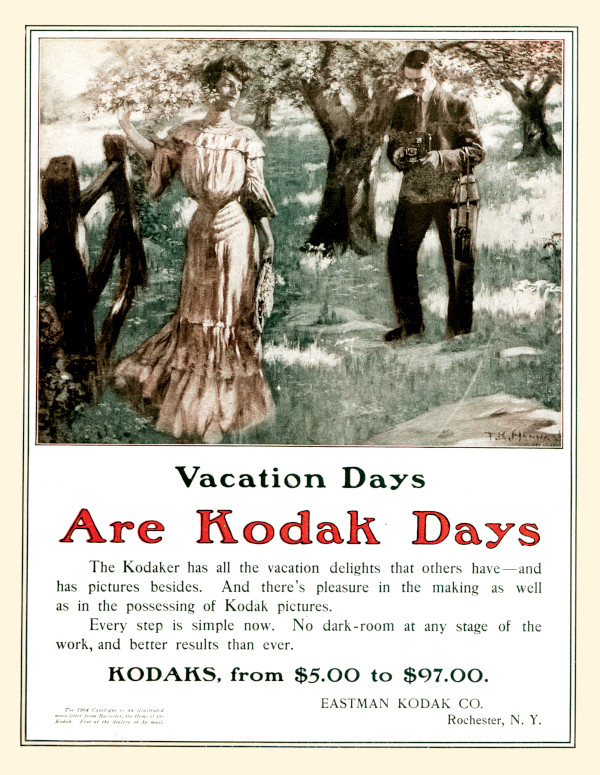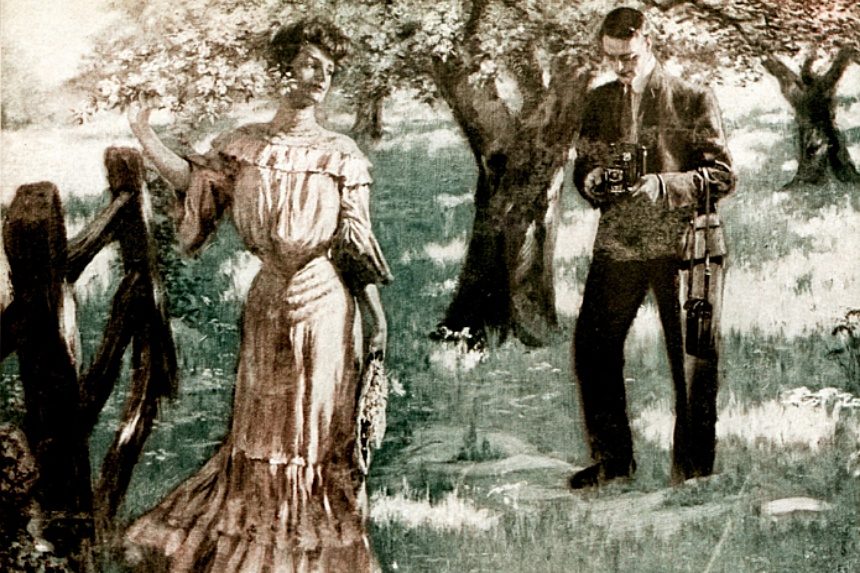It’s not too much of an exaggeration to say that the Kodak camera, which made amateur photography possible, was a life-changing technology of the 20th century. For the first time, Americans who’d never have the money to hire a portrait painter could create accurate, detailed images of their loved ones. They could capture events and people that, in previous generations, would have been lost to memory.
George Eastman launched this visual revolution in 1888 when he began selling his camera for $25. It came loaded with a roll of film — another of his innovations — that could hold 100 pictures. When photographers came to the end of the roll, they mailed their cameras to Rochester, New York, with $10. the Kodak company would develop and mail back the prints and negatives along with the reloaded camera. Despite the cost — the $25 purchase and $10 developing fee of 1888 represents $690 and $270 in today’s money — 2,500 cameras were sold in just the first year.

Twelve years later, Eastman introduced the Brownie camera, which enabled photographers to remove the film themselves, in daylight, and have it developed by local photofinishers. The convenience and low price — just $1.00 — enabled the company to sell 10 million cameras by 1905.
This article is featured in the September/October 2021 issue of The Saturday Evening Post. Subscribe to the magazine for more art, inspiring stories, fiction, humor, and features from our archives.
Become a Saturday Evening Post member and enjoy unlimited access. Subscribe now




Comments
It’s interesting to note that this Kodak ad used artwork in advertising a camera for photography. Also the no dark-room mention was surprising considering that those lasted well into the late 20th century, if not beyond. The price showed cameras (with the development cost) were basically just for the rich then, like the automobile. The Brownie camera later was the REAL revolution. I think the Post may have done a feature on that several years ago.